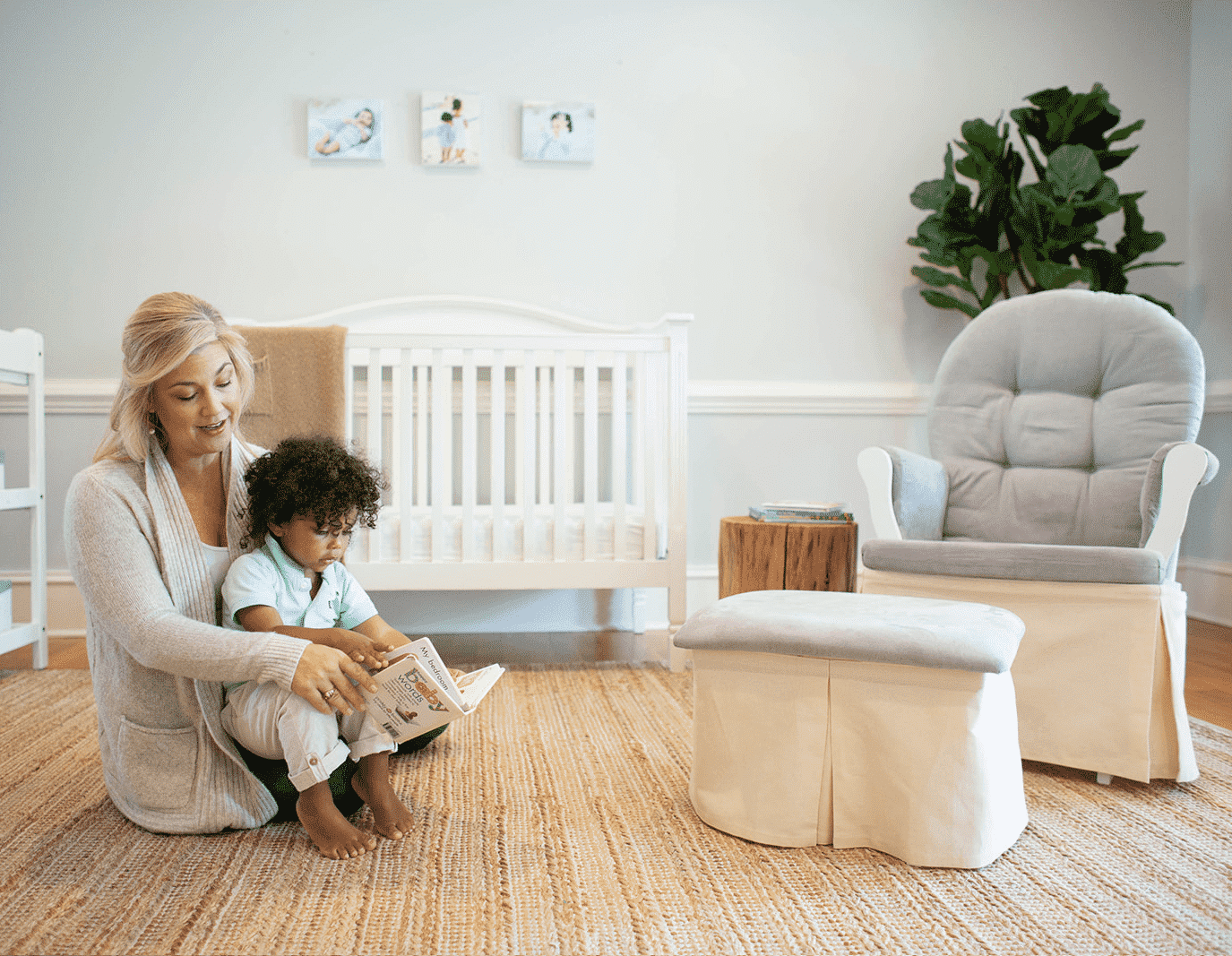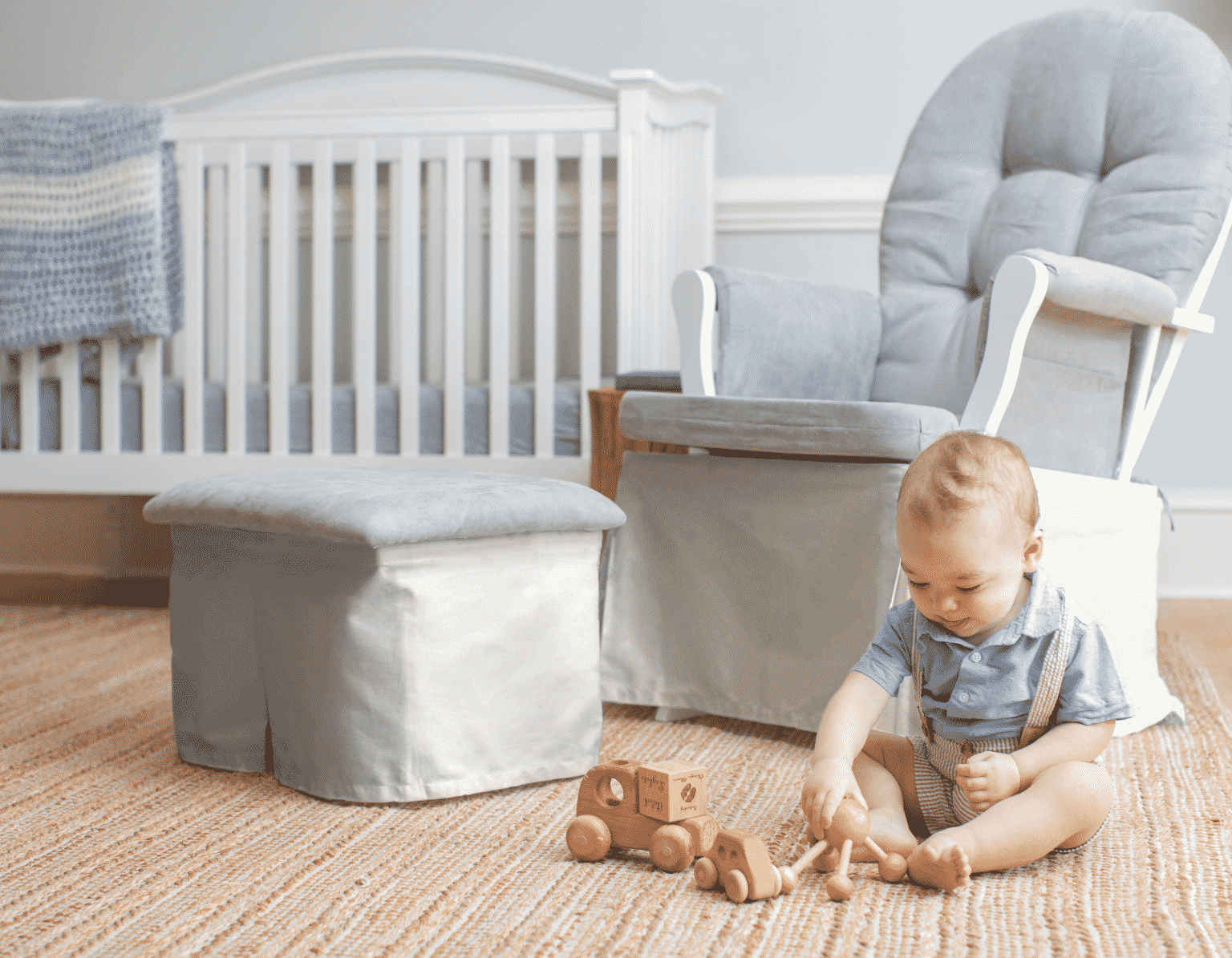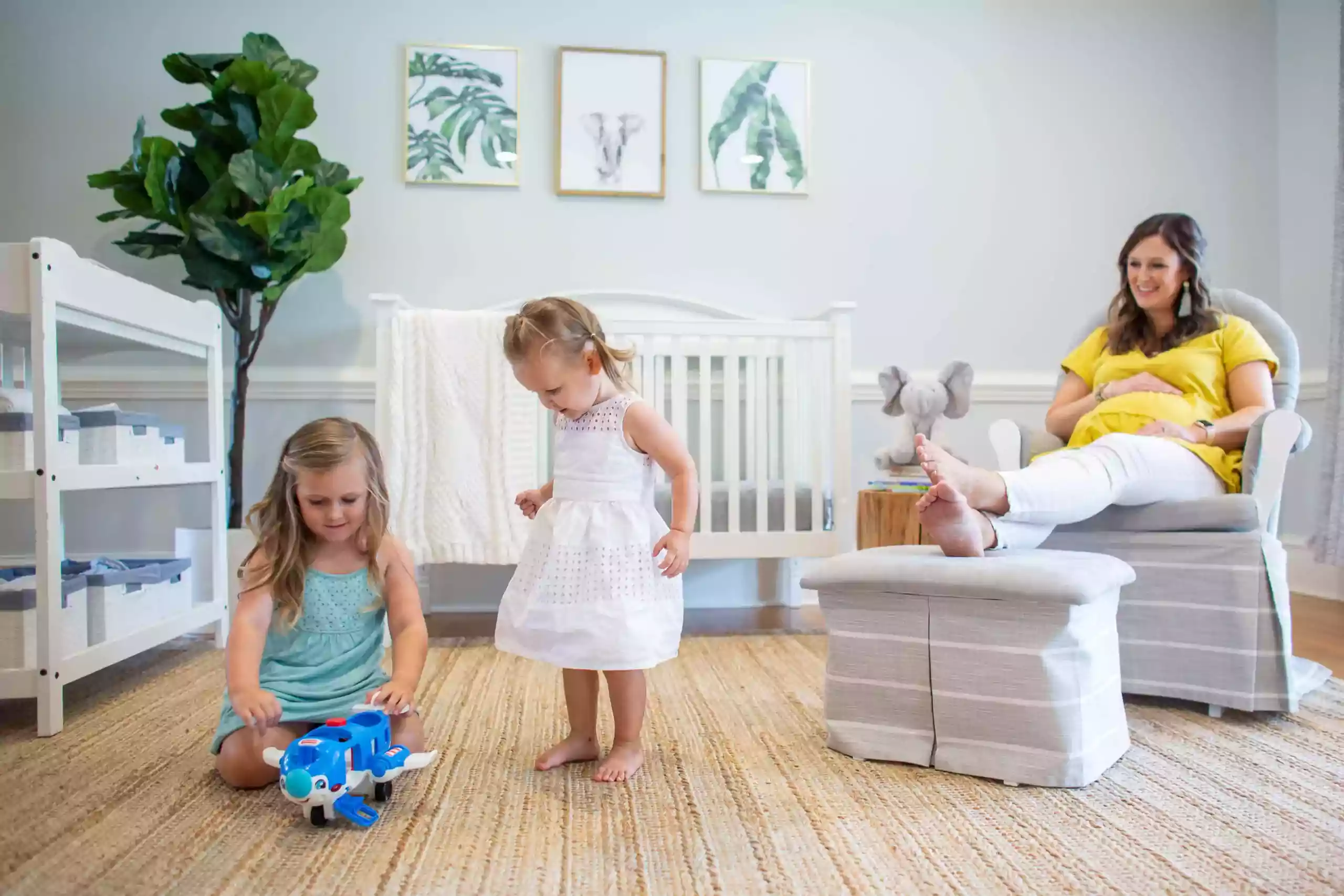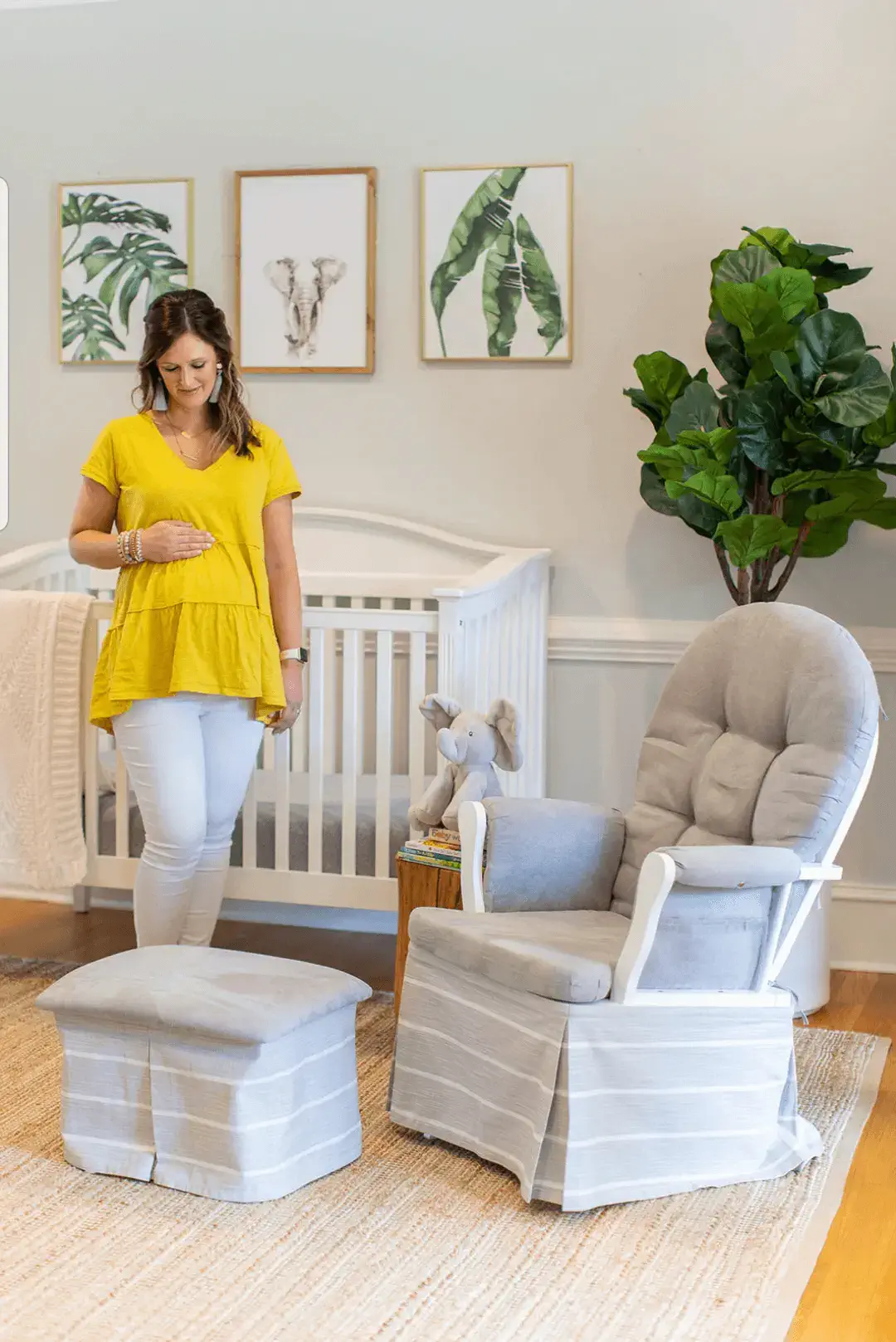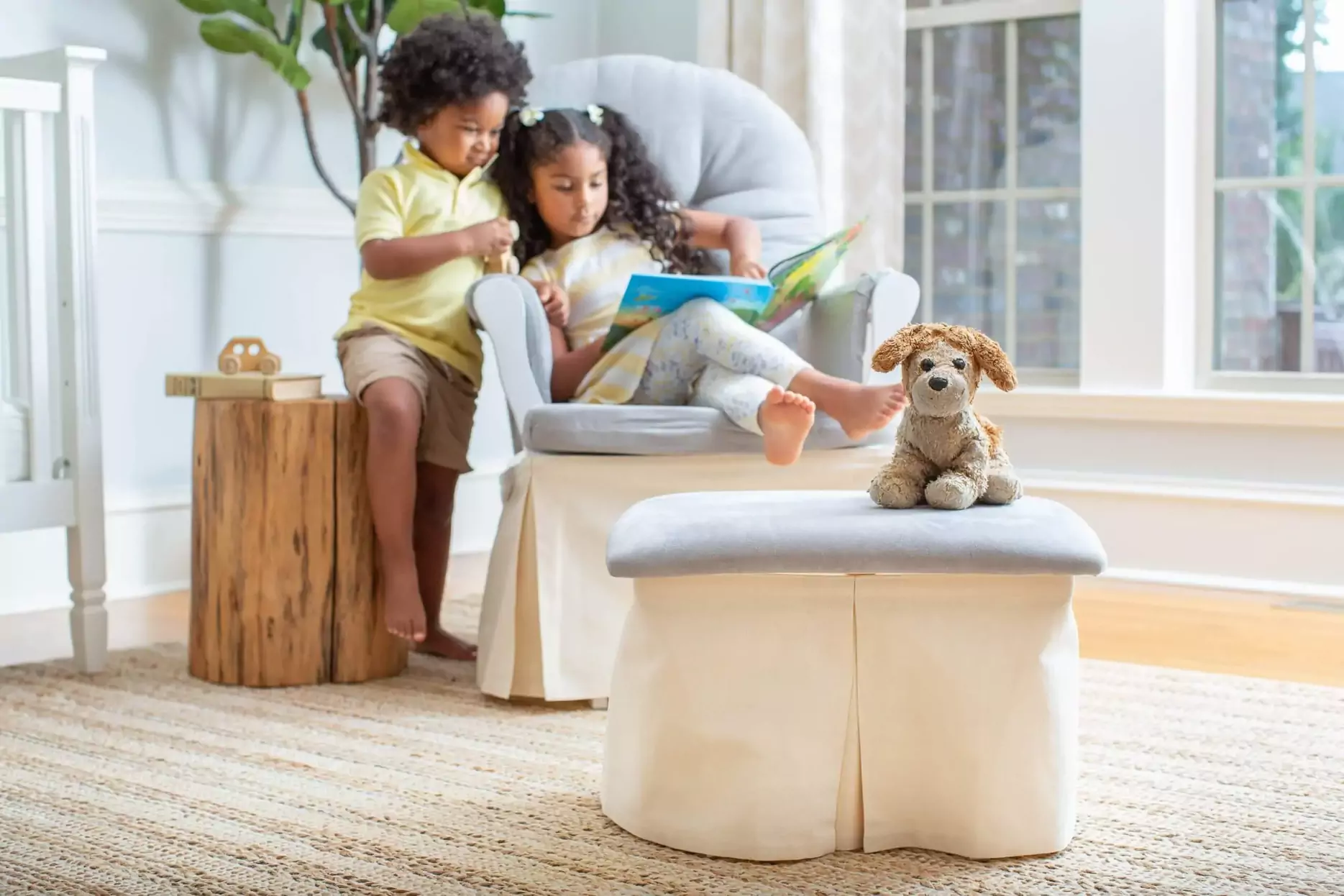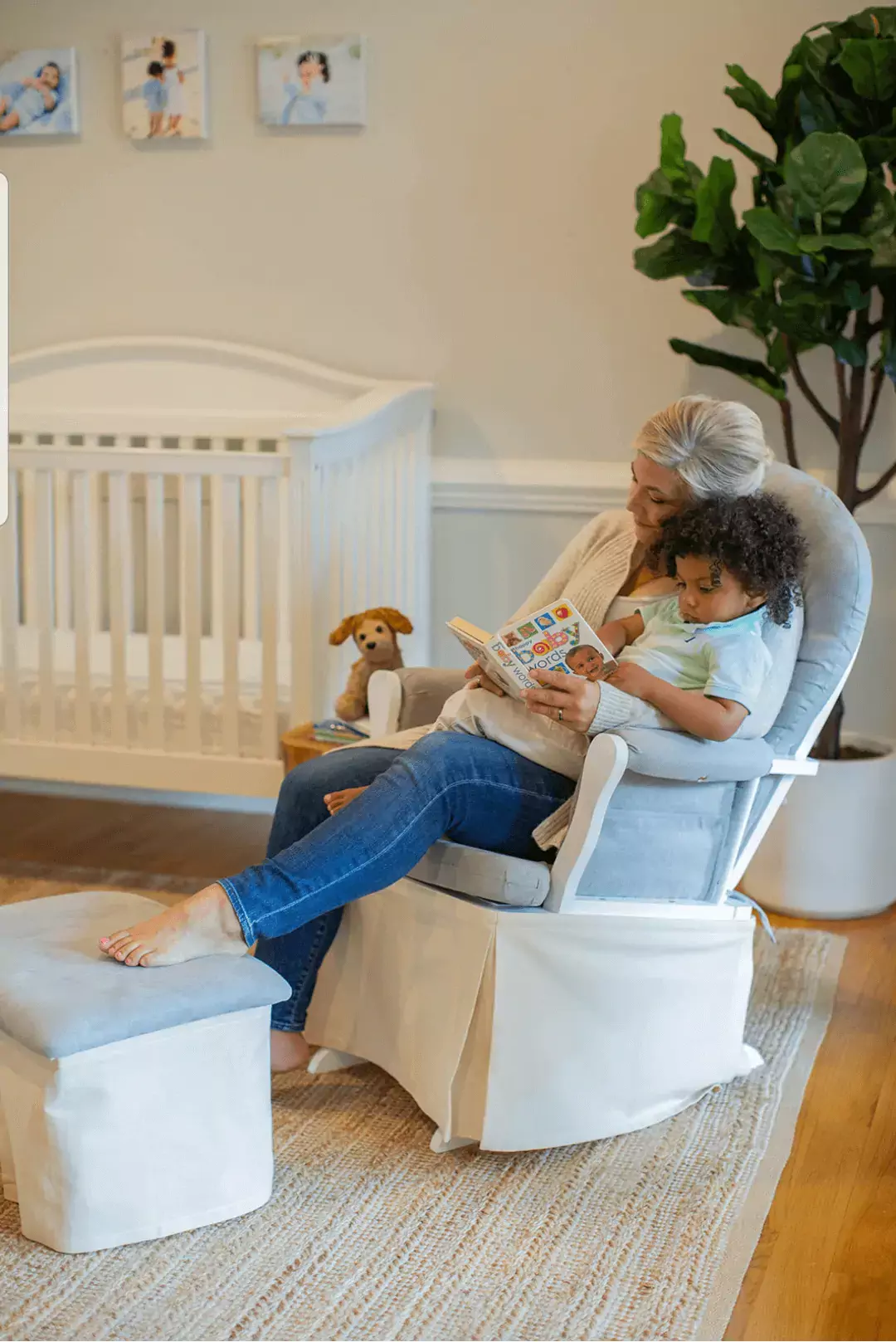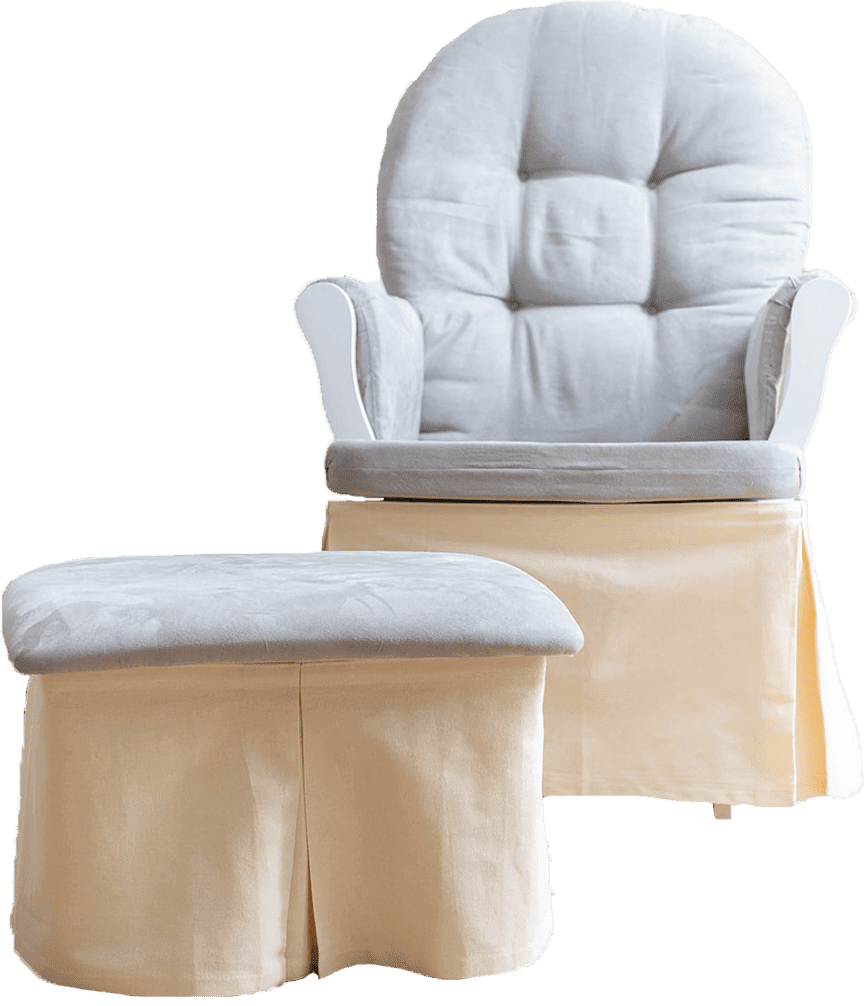5 Amazing Tips To Take Care of Your Nursery Glider Chairs
Glider chairs are some of the most essential parts of a nursery. They are more than just a chair to sit on. They are the space where you bond with your baby. It’s a feeding station, soothing station, reading, relaxation, and playing station all rolled into one.
Thus, it is definitely a worthwhile long-term investment. But, in order for it to last long term, it needs to be maintained well. At Gliderskirt, we’ve researched and engineered the art of making your nursery glider easy to upgrade and maintain.
Like any piece of furniture, there are a lot of factors that decide the maintenance level. This includes some pre-determined factors: the quality of the material, the build, the mechanism.
Then there are some factors you can control: how often it is cleaned, where is it placed, is it prone to breakdown in the environment you have placed it in.
Here’s a shortlist of some of the best nursery rocking chairs made of natural and non-toxic materials, according to The Safe Parent.
The health and longevity of your glider will depend on a combination of these factors. Let’s see how you can control them to the best of your ability so that your nursery glider lasts as long as you want it to!

Taking Care of Your Nursery Glider
Before Buying Your Glider Chairs
Before you purchase your glider, you have to keep in mind that it is never going to be as clean as you want it to be. Unlike furniture in other parts of the house, this is going to be a part of the messiest room.
From birth till toddlerhood, it will be seeing bodily fluids, vomit, milk, dust, dirt, spilled food, and a host of other spills and messes.
In order to combat this, you should opt for a solid structure that can be wiped around the mechanism. You also need cushions that have either been treated as spill-proof or are inherently stain-resistant like the microfiber fabric used on most glider chairs and ottomans to date.
There is a reason and great function for the popularity of microfiber fabric cushions. Spills just wipe up in a snap and then you are back to enjoying life with your baby.
In addition, you would also want to opt for a glider that comes with a good warranty. Sometimes damage can’t be undone at home (particularly if they get a spill into the mechanism of the glider). Having a good warranty ensures that you can get the external help needed to fix it without having to shell out more money.
Now that we’ve addressed the before part, let’s tackle the after part.
How to clean your nursery glider
One of the things to keep in mind with cleaning any stains in your nursery is that the stains are likely to be a lot more stubborn. Unlike regular water or milk spills, formula and milk given to babies is much higher in protein (as is the baby food). Proteins and fat-rich spills are a lot harder to clean than the food we consume as adults.
So, trying the regular methods of cleaning and scrubbing away at a stain will likely make the spill worse and cause irreparable damage to the seat cushions. This is why it is important to follow the below advice and steps to ensure that your glider cushions are kept clean in the safest way.
- Vacuuming
Periodically vacuuming the glider is important in keeping it clean. Make sure you use a powerful vacuum with a thin nozzle to get all dust out of the cushion and the gliding mechanism. No number of hypoallergenic items in a room will stop a dust allergy reaction in parents or infant if dust is allowed to linger.
Use a wet cloth (wet with water) to wipe down the wooden and mechanical parts (be careful of wiring if it’s electric). Get into all the crevices where food crumbs might’ve spilled.
Some vacuum cleaners come with specific attachments for upholstery. These are designed to suck out dirt and dust specifically from fabric and not just flat surfaces. Use these to clean your glider cushions in order to ensure maximum dry dirt being removed from the furniture.
- Wiping
Wiping down a stain is your next best bet, especially with liquid food, formula, or to remove breast milk stains from the cushion. If a large amount of fluid has spilled, then pat as much of it dry as you can before you wipe. Wiping is more likely to stain than patting.
Baby wipes are a good option for this. Not only are they extremely gentle, but they’ve been designed to wipe down and disinfect. As a result, they’re excellent at cleaning stains without causing an excessive chemical reaction or leaving behind any kind of harsh textures. If it’s safe for your baby, it’s definitely safe for the safety of your cushions.
Baby wipes are also highly absorbent since they’re made for bodily fluids. So using them for a liquid spill is a quick and effective first measure to take.
- Stain Removal
Before preparing any kind of stain removal solution, double-check what material the fabric of the cushion cover and interior is made of. If the cover is removable, it is better to remove the cover and clean it separately from the cushion because stain removal liquids usually seep through multiple layers and you don’t want to accidentally cause more damage.
And here goes another plug for the microfiber used on traditional glider chairs and ottomans! There is a reason that this design has been so widely produced. Not only is it super smooth and comfortable, but it is also designed to be water-resistant.
That said, check the laundry instruction, and do a small patch test in one corner to see how the dyes and weave in your fabric react to the solution before applying it to the fully stained area.
A good, fool-proof stain solution is a mixture of 1-part dishwashing soap and 2-parts water. The dishwashing soap will break down the protein and oils in the stain.
Put the solution in a spray bottle instead of pouring it directly onto the stain. That makes it easier to control the quantity that is being dispersed. Spray the stain and saturate the stain completely before letting it sit for 5-10 minutes. Once it has soaked the stain completely, use a clean white cloth dampened with plain water to wipe away the residue.
If you are unsure about the strength of the solution, there are also stain removers available on the market. You can buy one depending on the specific kind of spill, and what fits your budget. Enzyme cleaners on the market are made for protein-related spills and could prove helpful in this situation.
*Note: whichever avenue you choose for stain removal, remember that the sooner you get to the stain, the better.
- Steam Cleaning
Steam cleaning is a good way to get rid of grime and dust that are deeply ingrained into the fabric of the cushions. The high temperature of the steam kills bacteria, while the steam helps remove stains. It is a good way to disinfect any upholstery without actually using chemicals.
If you’re opting for steam cleaning, then you still need to wipe the stain a bit so that the dirt is loosened from between the strands of the cloth. Also, remember that steam is essentially wet, so you will need to give the cushion some time to dry before you can use it again.
Steam machines aren’t cheap, so if you don’t have one you can either hire a professional service or rent a steam machine for the fraction of the cost instead of purchasing one (unless you see a lot of use for it in the future).
- Dry Cleaning
Your final option would be to have the cushions and covers professionally dry cleaned. It is the least damaging way to clean sensitive fabric, but it costs more money than cleaning it yourself. But always check the cleaning care instructions related to your specific glider chair to make sure dry cleaning is advisable.
How to maintain the cleanliness of your glider
- Refurbish Upholstery
If you haven’t already bought spill-proof cushions, you can replace the upholstery to make it spill-proof. Some gliders – come with removable cushions. You can easily remove the cover and sew on a new one.
Doing a spill-proof treatment on cushions and covers is not highly expensive, so long as you are careful of the kind of foam in the cushion and the fabric of the cover. Gliderskirts can help you out here.
Gliderskirt has a patented cover for the glider mechanism and ottoman which not only protects your child’s fingers from pinching in the gliding mechanism but is also removable. These can be easily cleaned and replaced when they get stained or dirty, and they help keep the mechanism from collecting excessive dust.
Of course, tiny curious hands might leave their prints behind, but they’re very easy to clean and launder, which is cheaper than trying to clean the mechanism itself. And as an added bonus, they come in different styles, so you can spiff up and customize your chair and nursery while you’re at it!
This might sound like a lot, but you will spend countless hours enjoying your glider chair and ottoman, and like any piece of precious furniture, gliders require some basic care so that they can last and stay in your family for a long time.
These are investments, and for your investment to be most fruitful, you can follow these simple steps to ensure the longevity and durability of your glider set. After all, messes can’t be avoided, but cleaning them right can save a world of hassle later. Your time is better spent making memories with your growing family.
